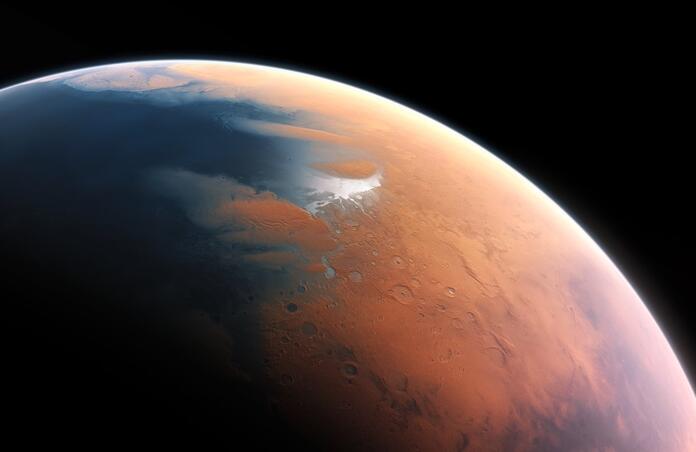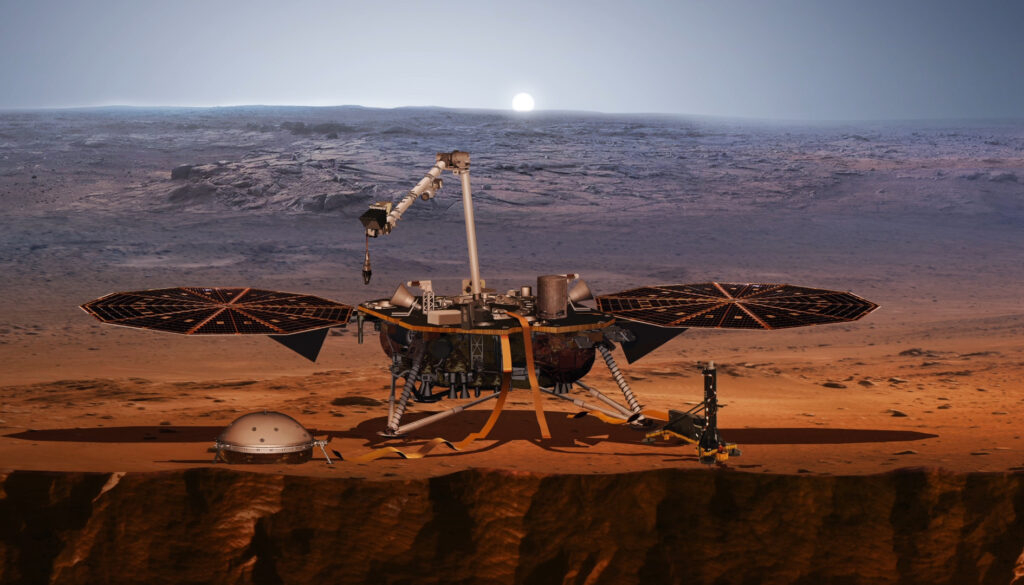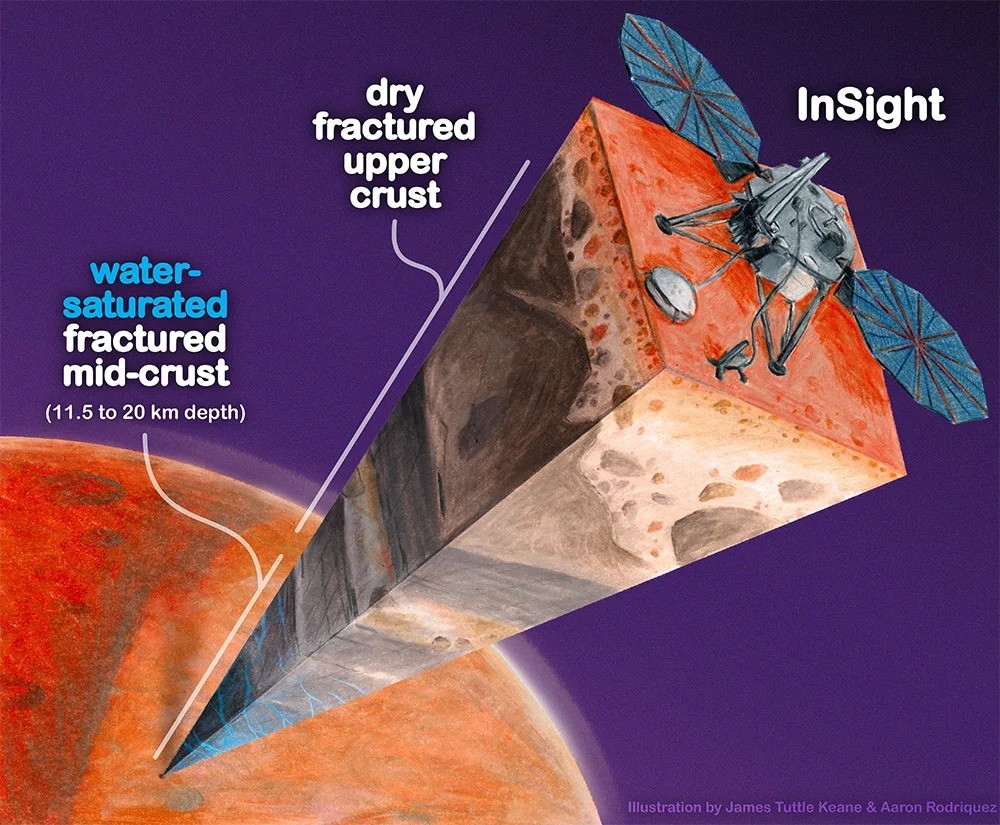Liquid water reservoir found deep beneath the Martian surface

A reservoir of liquid water on mars has been discovered after new analysis of data from NASAs Mars Insight Lander. The lander arrived on the red planet in 2018, equipped with a seismometer where it recorded martian vibrations for 4 years. From studying these vibrations and how the planet moves uncovered seismic signals of liquid water beneath the surface.

The Insight mission ran until December 2022, with the probe recording more than 1319 quakes up to a magnitude of 5, along with meteor impacts and volcanic rumblings. All of these events produce seismic waves, enabling geophysicists to access information about the interior.

Using the speed of the waves, scientists can determine what material they are travelling through. The team used a rock physics model, identical to those used for Earth when mapping underground aquifers and oil fields. They concluded that the seismic data taken from the lander can be explained by a deep layer of fractured igneous rock saturated with liquid water.
Water on Mars isn’t anything new, however, it is the first time that liquid water has been found. We know that there is frozen water at the poles along with evidence for vapour in the atmosphere. Previously, a study reported that no water ice was found in the upper crust above a depth of 5km, suggesting that there isn’t a lot of accessible frozen groundwater outside of the polar regions. However, the new analysis points towards the presence of liquid water reservoirs as deep as 6 to 12 miles in the Martian crust.
“Understanding the Martian water cycle is critical for understanding the evolution of the climate, surface and interior,” said lead researcher Dr Vashan Wright, from UC San Diego’s Scripps Institution of Oceanography.
Studies of Mars’ surface have revealed features such as channels and ripples, suggesting that there once were rivers and lakes. However, it has been a desert for the last 3 billion years following the loss of its atmosphere. Although some water was lost to space, there is no reason why some can’t also be buried underground.
The Insight probe only had the ability to record directly from the crust beneath it, but researchers predict similar reservoirs will be present across the planet. If this is true, it is estimated that there is enough liquid water on Mars to form a layer across the entire surface that would run over half a mile deep.
The potential presence of liquid water could be a hopeful step in the direction for the search for life on the Martian planet. However, the reservoirs are sequestered 10-20km deep in the crust, so if such life is thriving, it will be deep underground. Additionally, because of this, these reservoirs won’t be of any use to billionaires looking for a water supply as part of the plan to colonise Mars.
--
Cover image: ESO
Journal source: Vashan Wright, Matthias Morzfeld, Michael Manga. Liquid water in the Martian mid-crust. PNAS (2024).
